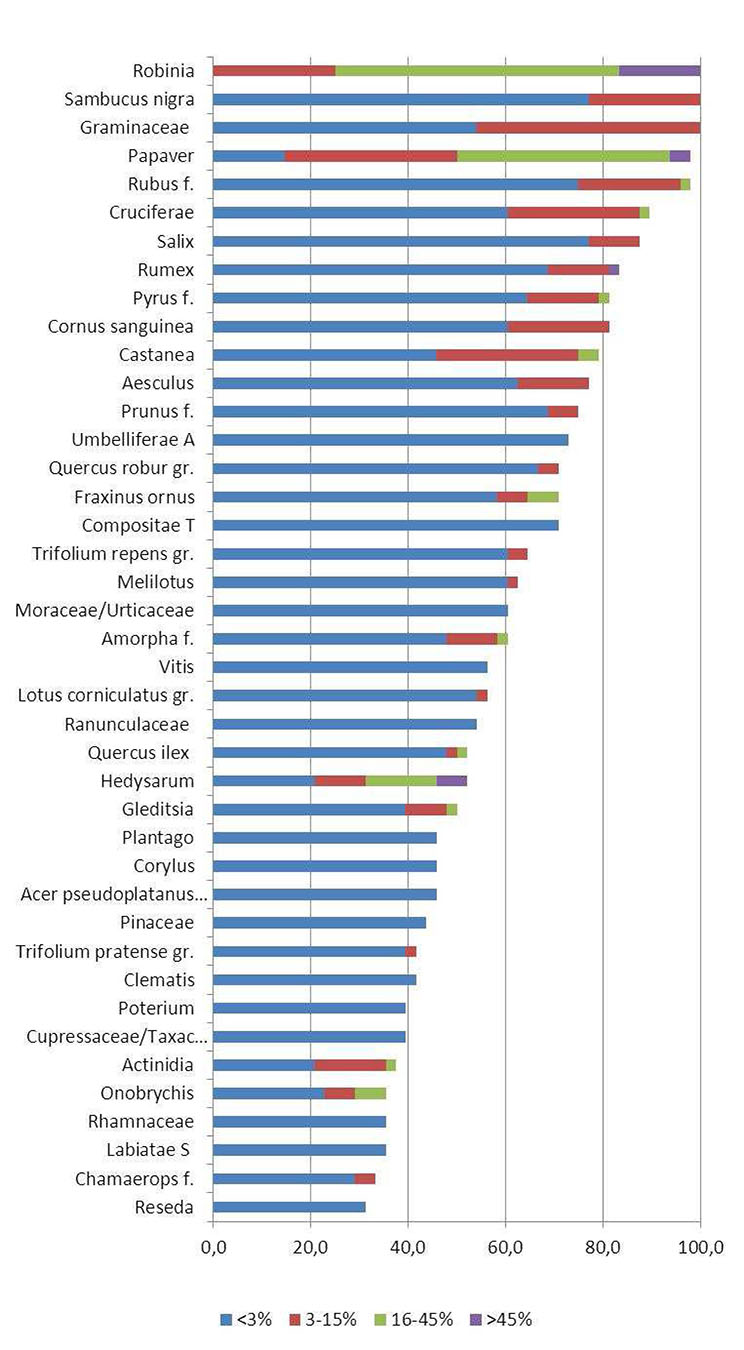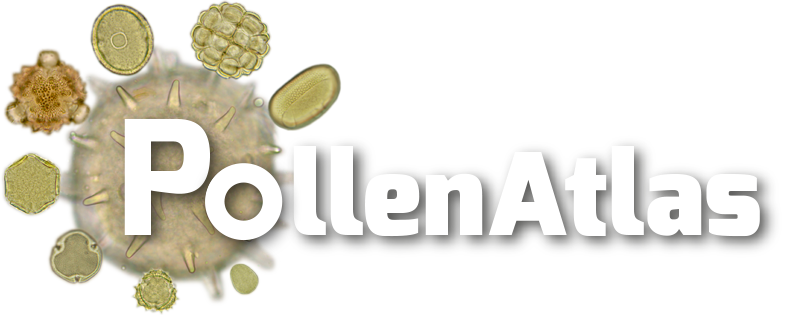Samples of honey locust come from the hilly areas of the region and represent the unifloral type quantitatively more important.
By melissopalynological point of view these honeys are characterized by a low absolute pollen grains content, generally less than 20,000. In some honeys the presence of Hedysarum pollen has increased the total amount of pollen grains, which, however, generally did not get up from the limit. Several samples were found very poor in pollen, with values of less than 10,000 PK.
The frequency of Robinia pollen was very variable and the values were most frequently found at the level of accompanying pollen (from 16 to 45%). In the pollen spectrum elements also common to other honeys in the region (Graminaceae, Rubus f., Cruciferae, Papaver), a very constant presence of other forms flowering in spring and those typical of the hilly area of production have been found: Sambucus nigra, Salix, Rumex, Cornus sanguinea and Pyrus f.. Castanea and Trifolium repens gr. were seen less frequently.
Compared to other honeys the incidence of early-flowering species (i.e. Aesculus, Prunus f., Ranunculaceae and Acer) appeared greater. The source area has well been represented by species typical of the hilly area (as well as Robinia, Sambucus nigra, Cornus sanguinea, Castanea, Fraxinus ornus, Hedysarum, the two types of pollen attributable to Quercus robur and Q. ilex). Even in this case, the relative importance of nectarless plants appeared as a characterizing element of a honey product mainly by species with decisively underrepresented pollen.
The differentiation of this type of honey compared to similar ones from other Italian regions and foreign is particularly important in relation to the high commercial value of the product. The Emilia-Romagna locust honeys have showed similarities with those produced in the northern Italy, because the typical Central European elements, but also with those of the Mediterranean area, because the elements normally more widespread in the south, are here common. So some Emilia-Romagna pseudacacia honeys have in common with the western foothills of the Alps (Lombard and Piedmontese) the very low absolute amount of pollen grains, the high incidence of nectarless species and the presence of Salix, Sambucus nigra, Rumex, Graminaceae, Chamaerops. They look like the pseudacacia honeys of the north-east (Veneto, Friuli-Venezia Giulia and Trentino) according to the abundant presence of Fraxinus ornus and Amorpha. They have similarities with the Tuscany and central Italy pseudacacia honeys due to the presence of Fraxinus ornus, Quercus robur and Q. ilex and Hedysarum. May suggest an east-European origin for the occasional presence of Loranthus europaeus. The geographical differentiation is based on other elements that associated with those mentioned above, may lead to the correct identification; in particular in Emilia-Romagna honeys, the simultaneous presence of both elements central-European and Mediterranean, with the prevalence of a zone or of another is the most important datum.
False acacia honey pollen spectrum





